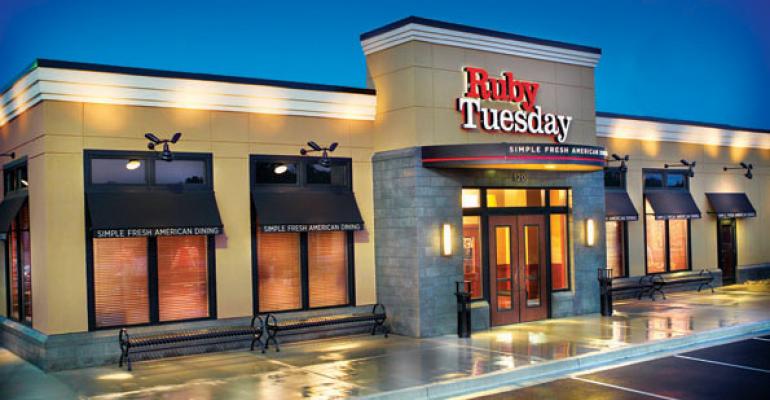Ruby Tuesday Inc. expects to close as many as 16 more of its namesake restaurants this year as part of a turnaround that included the company shedding more than 30 units in the past year, executives said Wednesday.
The closures are part of a yearlong initiative at the Maryville, Tenn.-based operator, which also owns the Lime Fresh brand.
“We expect to close 10 to 13 company-owned Ruby Tuesday restaurants, and our domestic franchisees expect to close three Ruby Tuesday restaurants,” Jill Golder, chief financial officer at Ruby Tuesday, said in a first-quarter earnings conference call with analysts.
Ruby Tuesday completed the first-quarter ended Sept. 2 with 749 units of its casual-dining brand, 666 of which are company-owned. It started the year with 779 Ruby Tuesday units.
As it continues to close under-performing units, company executives said they are making headway in a brand turnaround.
For the quarter, the chain posted a 1.3-percent increase in guest counts at its Ruby Tuesday units, leading to a 1.1-percent increase in same-store sales at company-owned units. It was the second consecutive quarter of improved traffic. At the 31 domestic Ruby Tuesday franchised restaurants in the comparison base, same-store sales rose 6 percent, the company said.
“We're in the process of transforming the Ruby Tuesday brand, making it more casual, energetic and affordable,” James “JJ” Buettgen, Ruby Tuesday’s chairman, president and chief executive, told analysts.
That includes a reengineered Ruby Tuesday menu that offers guests wider variety and a simplified kitchen operations strategy.
“In the last 18 months we've introduced 40 new and improved items to our menu,” said Todd Burrowes, president, Ruby Tuesday Concept and chief operations officer. “Our goal here is to make a quantum leap in the execution level of our existing menu items while freeing up capacity for additional menu innovation to support our brand transformation strategy.”
Burrowes noted that Ruby Tuesday rolled out a new labor productivity tool in the fourth quarter in conjunction with a guest-count forecasting tool.
“Together, these two systems enable our restaurateurs to better project when are guests are expected in the restaurant, ensuring that we have the right staffing in place,” Burrowes said.
Another benefit of the labor scheduling program, CEO Buettgen noted, is that “in addition to more accurately scheduling hours, it helps us be much more efficient in terms of scheduling kitchen hours, which are much more expensive. So that's had some impact on wage rate as well.”
Despite the expected additional Ruby Tuesday closures, the company plans to open new units in the coming year, executives said.
“We plan to open one new company-owned Ruby Tuesday restaurant and one rebuilt Ruby Tuesday restaurant that closed in the prior quarter due to storm damage,” CFO Golder said. “Our international franchisees expect to open five to eight Ruby Tuesday restaurants.”
For the first quarter, Ruby Tuesday reported income of $2.6 million, compared with a loss of $22.3 million in the same period last year. Revenue in the quarter dipped 2.9 percent, to $281.2 million, from $289.7 million in the same quarter in the prior year.
Besides its 749 Ruby Tuesday restaurants in 45 states, the District of Columbia, 12 other nations and Guam, the company also owns 20 Lime Fresh restaurants and franchises seven units of that brand.
Contact Ron Ruggless at [email protected].
Follow him on Twitter: @RonRuggless





